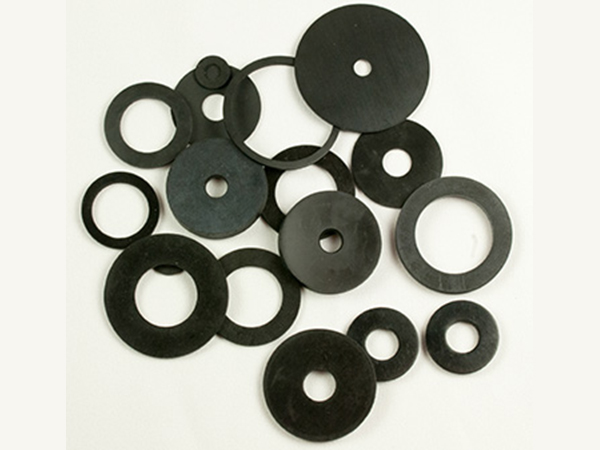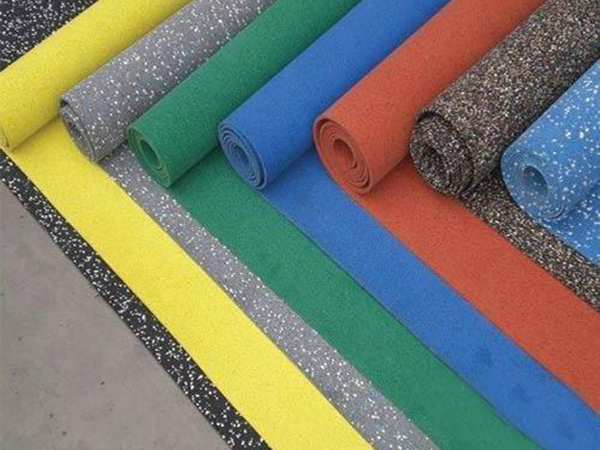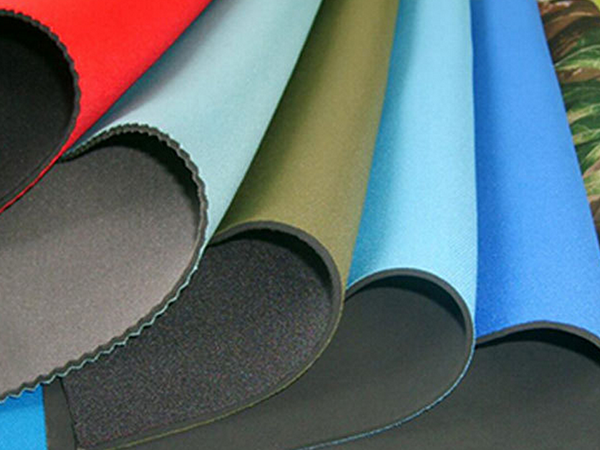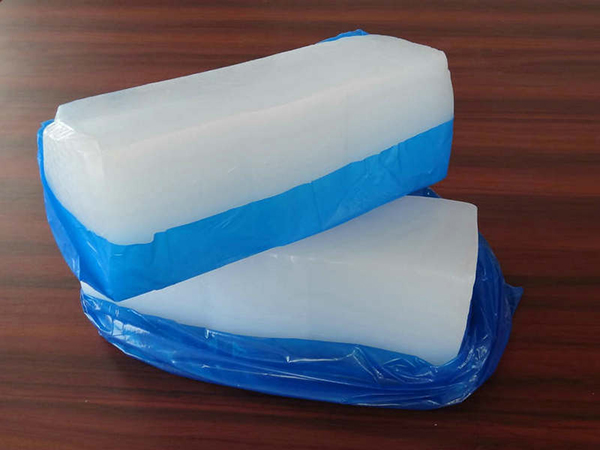TOP 5 Elastomers For Gasket & Seal Applications
What are elastomers? The term derives from “elastic”-one of the fundamental properties of rubber. The words “rubber” and “elastomer” are used interchangeably to refer to polymers with viscoelasticity-commonly referred to as “elasticity.” The inherent properties of elastomers include flexibility, high elongation and a combination of resilience and damping (damping is a property of rubber that causes it to convert mechanical energy to heat when subjected to deflection). This unique set of properties makes elastomers an ideal material for gaskets, seals, isolat ors, and the like.
Over the years, elastomer production has migrated from natural rubber yielded from tree latex to highly engineered rubber compounding variations. In creating these variations, specific properties are attained with the help of additives such as fillers or plasticizers or by varying content ratios within the copolymer structure. The evolution of elastomer production creates a myriad of elastomer possibilities that can be engineered, manufactured and made available within the marketplace.
In order to choose the right material, one should first examine the common criteria for elastomer performance in gasket and seal applications. When selecting an effective material, engineers will often have to take a multitude of factors into consideration. Service conditions such as operating temperature range, environmental conditions, chemical contact, and mechanical or physical requirements all need to be carefully considered. Depending on the application, these service conditions can greatly affect performance and life expectancy of an elastomer gasket or seal.
With these notions in mind, let’s examine five of the most commonly employed elastomers for gasket and seal applications.

1) Buna-N/Nitrile/NBR
All synonymous terms, this synthetic rubber copolymer of acrylonitrile (ACN) and butadiene, or Nitrile butadiene rubber (NBR), is a popular choice that is often specified when gasoline, oil and/or greases are present.
Main Properties:
Max Temperature Range from ~ -54°C to 121°C (-65° – 250°F).
Very good resistance to oils, solvents and fuels.
Good abrasion resistance, cold flow, tear resistance.
Preferred for applications with Nitrogen or Helium.
Poor resistance to UV, ozone, and weathering.
Poor resistance to ketones and chlorinated hydrocarbons.
Most Often Utilized in:
Aerospace & Automotive Fuel Handling Applications
Relative Cost:
Low to Moderate

2)EPDM
The composition of EPDM starts with the copolymerization of ethylene and propylene. A third monomer, a diene, is added so that the material can be vulcanized with sulfur. The yielded compound is known as ethylene propylene diene monomer (EPDM).
Main Properties:
Max Temperature Range from ~ -59°C to 149°C (-75° – 300°F).
Excellent heat, ozone and weather resistance.
Good resistance to polar substances and steam.
Excellent electrical insulating properties.
Good resistance to ketones, ordinary diluted acids, and alkalines.
Poor resistance to oils, gasoline, and kerosene.
Poor resistance to aliphatic hydrocarbons, halogenated solvents, and concentrated acids.
Most Often Utilized In:
Refrigerated/Cold-Room Environments
Automotive Cooling System and Weather-Stripping Applications
Relative Cost:
Low – Moderate

3) Neoprene
The neoprene family of synthetic rubbers is produced by the polymerization of chloroprene and is also known as polychloroprene or Chloroprene (CR).
Main Properties:
Max Temperature Range from ~ -57°C to 138°C (-70° – 280°F).
Excellent impact, abrasion and flame resistant properties.
Good tear resistance and compression set.
Excellent water resistance.
Good resistance to moderate exposure to ozone, UV, and weathering as well as oils, greases, and mild solvents.
Poor resistance to strong acids, solvents, esters, and ketones.
Poor resistance to chlorinated, aromatic, and nitro-hydrocarbons.
Most Often Utilized In:
Aquatic Environment Applications
Electronic
Relative Cost:
Low

4) Silicone
Silicone rubbers are high-polymer vinyl methyl polysiloxanes, designated as (VMQ), that perform very well in challenging thermal environments. Due to their purity, silicone rubbers are particularly well suited for hygienic applications.
Main Properties:
Max Temperature Range from ~ -100°C to 250°C (-148° – 482°F).
Excellent high temperature resistance.
Outstanding UV, ozone and weather resistance.
Exhibits the best low temperature flexibility of the materials listed.
Very good dielectric properties.
Poor tensile strength and tear resistance.
Poor resistance to solvents, oils, and concentrated acids.
Poor resistance to steam.
Most Often Utilized In:
Food & Beverage Applications
Pharmaceutical Environment Applications (Except steam sterilization)
Relative Cost:
Moderate – High

5) Fluoroelastomer/Viton®
Viton® fluoroelastomers are categorized under the designation FKM. This class of elastomers is a family comprised of copolymers of hexafluoropropylene (HFP) and vinylidene fluoride (VDF or VF2).
Terpolymers of tetrafluoroethylene (TFE), vinylidene fluoride (VDF) and hexafluoropropylene (HFP) as well as perfluoromethylvinylether (PMVE) containing specialties are observed in advanced grades.
FKM is known as the solution of choice when high temperature as well as chemical resistance is required.
Main Properties:
Max Temperature Range from ~ -30°C to 315°C (-20° – 600°F).
Best high temperature resistance.
Outstanding UV, ozone and weather resistance.
Poor resistance to ketones, low molecular weight esters.
Poor resistance to alcohols and nitro-containing compounds
Poor resistance to low temperature.
Most Often Utilized In:
Aquatic/SCUBA Sealing Applications
Automotive Fuel Applications with High Concentrations of Biodiesel
Aerospace Seal Applications in Support of Fuel, Lubricant, and Hydraulic Systems
Relative Cost:
High
Post time: Apr-15-2020
